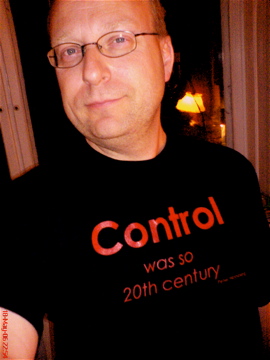Last year it seemed like the Swedish biennial for computerbased art - Electrohype - had turned off the electricity forever - read this.
But the good news this week is: They’re back! They’ve moved from Malmoe to Lund and this is their call for entries:
“Call for entries. Electrohype 2006 – the fourth Nordic biennial for computer based art
Deadline July 3rd 2006 – material via ordinary mail should be postmarked by this date.
Electrohype is pleased to announce this call for entries for the exhibition that will be a follow up to the previous large Electrohype exhibitions in 2000, 2002 and 2004.
The exhibition will take place in Lunds Konsthall from December 9th to January 7th.
This year the exhibition will be in both a new venue and a new city. Lunds Konsthall is located in the central part of Lund, in the south of Sweden. Lund is approximately 20 km north of Malmo where previous Electrohype exhibitions has been presented.
Lunds Konsthall, built in 1957, is a beautiful exhibition spaces in late functionalist architecture style. The exhibition space has a flexible semi-open layout with a total exhibition surface of approximately 600 - 800 square meters. The annual number of visitors in Lunds Konsthall is 95 000.
The exhibition will present works by 8 – 10 artists or artist groups. The concept of the Electrohype biennial is that it shall be a Nordic exhibition but this does not exclude works by artists from outside the Nordic region. To give the exhibition a broad perspective we are usually working with a 50/50model, 50 percent from the Nordic region and 50 percent from the rest of the world.
Since the decision to realize the exhibition was made just recently we have not yet decided on a theme or topic for this exhibition. This also explains the short deadline.
In addition to the main exhibition there will also be an exhibition with the topic “electronic art in public space” at the Museum of Sketches in Lund, a museum dedicated to public art. Most of the artworks in the museum are in the form of models, visualizations and sketches. This exhibition will be presented during the same period as the main exhibition. This call, and the application form, does not
include this exhibition, however if you have knowledge of, or have realized a project you think we should know of feel free to send us a short description
(maximum 1/2 page) and link to a project page. Please write “public” in
the subject line.
Important dates
Deadline for this call for entries July 3rd 2006
Exhibition opening December 9th 2006
Exhibition closing January 7th 2007
Please feel free to re-distribute this call.
What kind of art are we looking for?
Electrohype has since the start in 1999 focused on what we choose to call computer based art. Art that runs of computers and utilizes the capacity of the computer to mix various media, allow interaction with the audience, or machines interacting with each others etc. in other words art that can not be transferred to “traditional” linear media.
This might seem as a narrow approach but we have discovered that it gives us a better focus on a genre that in no way is narrow.
We are not looking for “straight” video art (even if it is edited on a computer) or still images rendered on computers and other material that refers to more “traditional” media forms. Forms were the traditional tools have been replaced with computers and software.
Practical
An online application form and a PDF form can be found on this address:
www.electrohype.org/2006
NOTE: Please do NOT send documentation material as attachments to e-mail and do NOT send 8 pages CVs. Put your material online and send us the url or ftp address or send us a CD in the mail. Please read the form and follow the guidelines. We receive a large amount of proposals and all of them are reviewed closely. To be able to do this we ask you to follow the structure in the application form and the topics mentioned above.
Financial
We are still working on the fundraising for the exhibition. We will hopefully have final numbers sometime during this summer. We will have to adjust the final selection of works for exhibition according to the financial situation. This is unfortunate but it is also necessary, art is beautiful but financial reality is harsh.
We will encourage everyone submitting material to look for possibilities for local funding to help cover costs for transport, travel and rent of technical equipment.
In previous exhibitions we have managed to keep a high level both in artistic content and exhibition design, even on a modest budget. It is therefore very important for us to avoid unpleasant surprises, so please keep this in mind when filling out the various posts in the form, especially when it comes to technical requirements, transport weight etc.
We are looking forward to see new and interesting works of art.
Best regards from the Electrohype team
Anna Kindvall and Lars Gustav Midboe”
For additional info please visit:
http://www.electrohype.org/2006

